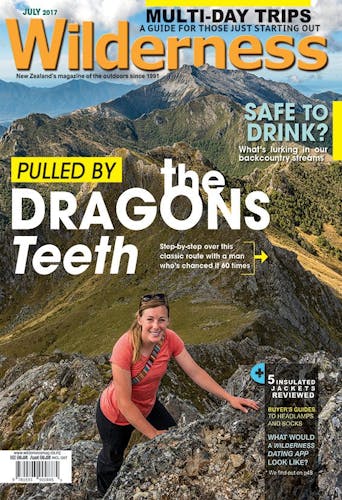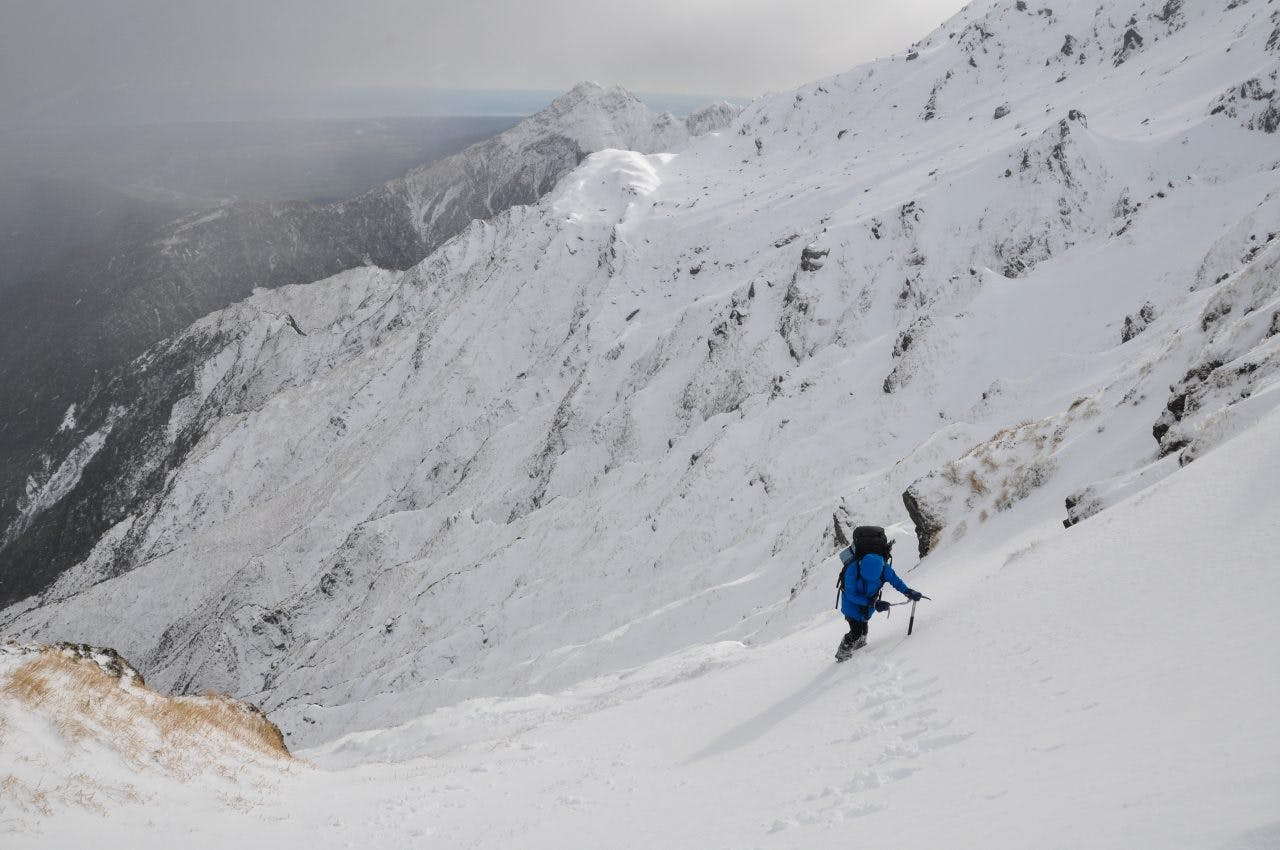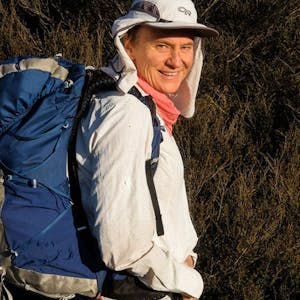- Distance
- 32.3km
- Total Ascent
- 2722m
- Time
- 4-6 days
- Grade
- Moderate/Difficult
- Access
- From the end of Middlebranch Road, off Upper Kokatahi Road and inland from Hokitika
- Map
- BV19
- GPX File
- Toaroha-Kokatahi Circuit.West Coast (gpx, yo 71 KB)
- Your device does not support GPX files. Please try a different device.
A winter circuit of the Toaroha Range offers a new take on a West Coast classic and provides a trip that will live in the memory, writes Jo Stilwell
As we headed up the Toaroha River in July, snow dusted the upper forest like sprinkled icing sugar. The crisp white of the heavily snow-coated tops contrasted with the blue sky beyond. The blues and greens of the river valley completed the kaleidoscope of colours. It was the West Coast at its finest and there was no place I’d rather be.
A southerly blast had dumped a good amount of snow on the mountains, but the weather was clearing so we planned to complete a classic West Coast tramp, crossing into the Kokatahi, and out over Lathrop Saddle to the Styx. It didn’t quite go to plan.
Winter trips have their own special characteristics. Landscapes are transformed by snow and ice. It can be uncomfortably cold. Nights are long and daylight hours short. Relatively easy summer country can feel like a real wilderness adventure in the depths of winter. And keeping leather boots dry becomes an obsession. This is especially true for me. I had mild frostbite on a big toe years ago and said toe still reminded me that it preferred to be warm and dry. Wet feet were inevitable at some stage of the trip, but on our first day up the Toaroha Valley to Cedar Flat Hut, we easily avoided the mud patches and side streams, arriving at the hut with only slightly damp boots.
The cold closed in around us by mid-afternoon. The ground was soon frozen and by nightfall, ice had formed on the inside of the windows. Our meager fire, fuelled with wet wood, barely warmed the hut above freezing, but we were soon full with hot food and snuggled into heavy winter sleeping bags.
The frost in the valley was so severe the next morning I was sure it had snowed. Hoar frost coated the grass and tussocks, built up over many days of cloudy skies. At least we were heading to the tops, where, despite the snow, there would be some sunshine. Confined to the cold valley floor for a while longer, the track passed through striking cedar forests to the upper Toaroha swingbridge, where an impressive canyon kept me busy with my camera while my husband, David, waited on the frozen river bank. We cautiously crossed the icy side-stream and welcomed the warming exertion required to climb 500m to Adventure Bivouac. At 1020m, it was well above the snowline, and the anticipated pleasure of sunshine didn’t disappoint.
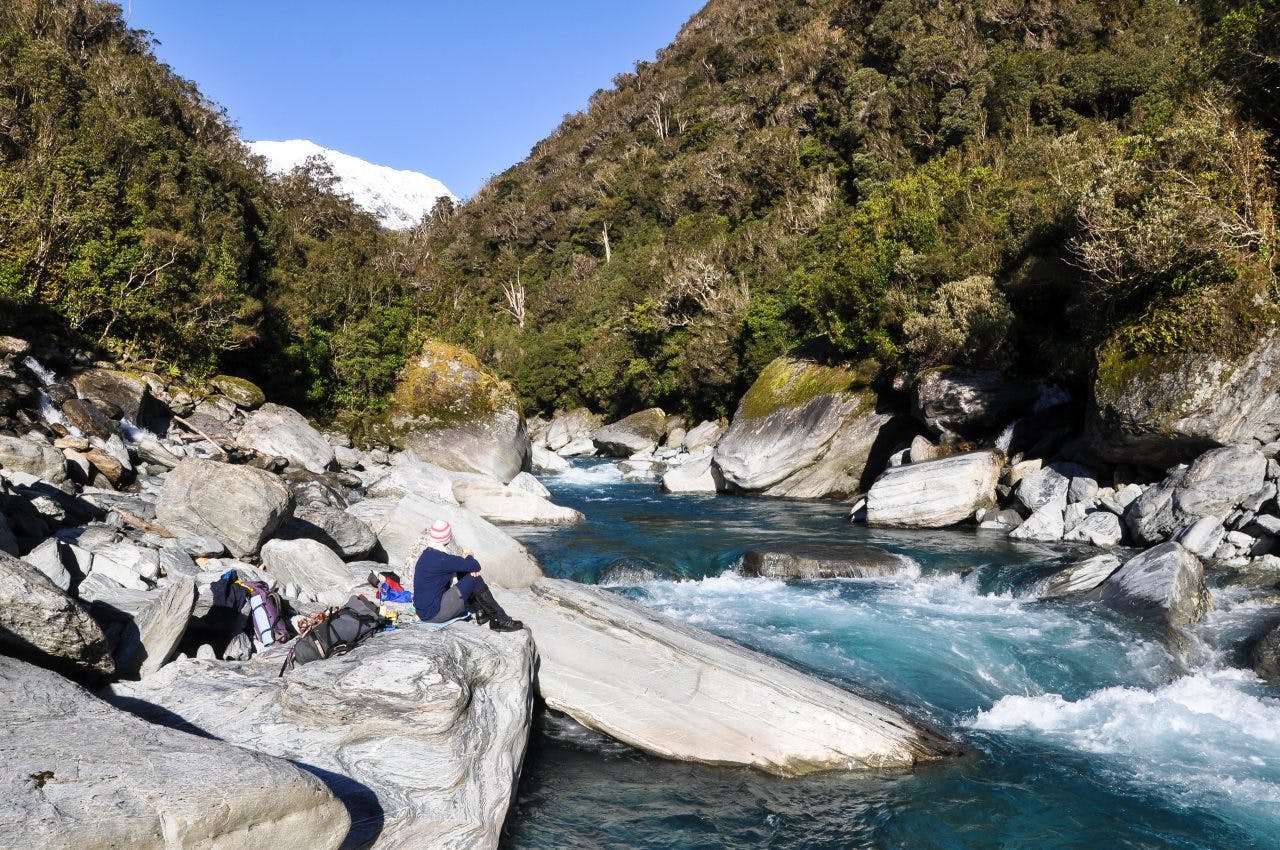
Snow-free travel in the lower Toaroha Valley. Photo: Jo Stilwell
Leaving our gear at the biv, we walked towards Zit Saddle. The snow was deep underfoot, and the snow-laden shrubs hung heavily and low, showering us with snow at the slightest knock. It took more than an hour to forge a trail through half a kilometre of flat track. It was a beautiful winter afternoon and walking back in the glow of the winter sun was a perfect finish to the day.
In the tiny un-insulated biv, we had a surprisingly warm sleep. Maybe the snow-covered roof acted like an insulating igloo, or more likely because I was wearing every piece of spare clothing, plus David’s down jacket. We were in our sleeping bags by 6pm and emerged 14 hours later rested and relieved to be upright again. I kept my (still-dry) boots from freezing by wrapping them in my raincoat to form a pillow. I had the pleasure, once again, of starting the day with warm feet.
It was a long, slow, snow plug to Zit Saddle. When our cleared path from yesterday’s efforts ended, it was back to groveling, crawling, and other undignified maneuvers to move forward through the deep snow. We took turns leading. When I led, David usually fell through my lighter formed footsteps. With him in front, I more than once became stranded in an awkward, splits-like position, as his steps were too deep and far apart for my shorter legs. Nearer the saddle, the terrain steepened and the snow hardened making travel significantly easier.
The winter views from the saddle were spectacular. A weak sun fought off the snow showers, revealing the beautiful forms and shapes of the snow basins to the east. Plumes of spindrift rose from the ridges and as the cloud lifted, we could see into a snowy Kokatahi Valley. Though just a long day’s walk from the road end, the winter conditions created a wonderful feeling of being in a remote wilderness.
The snow was even deeper on the Kokatahi side of the saddle, but with gravity involved, plowing through it was more fun than hard work. But the fun stopped abruptly when we reached the creek. The snow was heavy enough to conceal boulders and vegetation, but not deep enough to hold our weight and many times I came close to falling into the icy water. Still, my boots remained dry-ish, made only damp by the snow they had accumulated due to the inefficiency of my old holey gaiters.
It had taken us five hours from Adventure Biv to Top Kokatahi Hut; an easy three-hour walk in summer conditions. There was too much snow to follow our original plans and continue to Lathrop Saddle and the Styx Valley. Instead, we decided to exit down the Kokatahi, a valley I’d always wanted to visit. There was apparently a feeble attempt at a track in the middle part. It was known to be a good bush bash, with thick bush and huge boulders to negotiate – the type of tramping I both love and loathe.
Changing our plans meant we could stop for the day. Our sense of being in a remote wilderness, days from civilisation was heightened by the scarcity of hut book entries through the winter months. I whiled away the afternoon indulging myself in photographing the snow-mantled landscape, periodically popping back to the hut to warm up between photography sessions. The hut had lost the sun by 1:30pm, but a cracker of a fire provided comfort and warmth, and dried our clothes and boots.
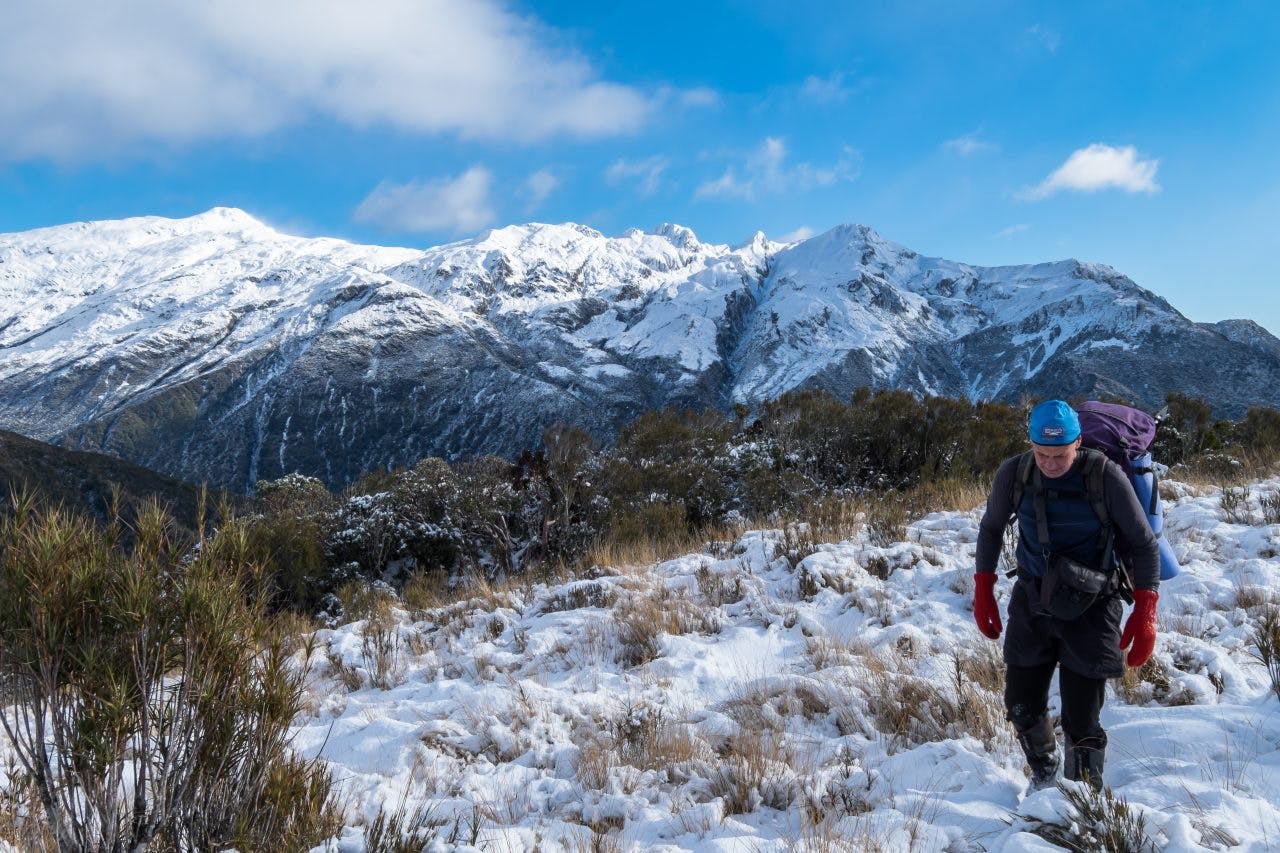
Approaching a snowy Adventure Bivouac with the Toaroha Range behind. Photo: Jo Stilwell
The next morning, we slid over snowy boulders, balanced precariously on icy rocks and generally risked our necks for the sake of keeping dry feet. When the inevitable river crossings occurred, my toe objected painfully until my feet became solid blocks of ice. We used speed to keep warm, but the snow continued for a long way down the valley, and my toe never regained feeling until it was wrapped in dry socks and my sleeping bag at Crawford Junction Hut.
Neither of us was in a hurry the following morning. Unable to be enticed from the warmth of our sleeping bags we enjoyed a lazy morning in the hut, taking turns to stoke the fire and put on the next brew. I propped my Kindle on the side of the bunk and with my sleeping bag gathered around my head, poked a sole finger into the icy air when it was time to turn the page. We waited for the sun to sidle down the hill and once it hit the hut at 11:30am, we surfaced and braved frozen socks and boots to begin the walk to Boo Boo Hut.
It was painful plunging into the deep ford to cross the Crawford River. Ice formed on our boots and gaiters and my toe complained. But it’s hard to be unhappy in this West Coast valley. The sky was a clear blue without a cloud and we appreciated the invigorating cold air and the details in the surroundings that only winter can provide. We crunched over frozen possum prints in the sand and marveled at the hoar frost growing on the mossy rocks.
Travel in this untracked section of the valley meant sticking close to the river, climbing up and around giant boulders with an occasional thigh-deep wade. Though ice formed on our long johns as well as our boots, bush bashing around small bluffs and climbing high above eroded creeks kept us almost warm. But it was very slow travel, and we questioned the wisdom of using half of our daylight hours waiting for the sun at Crawford Junction.
Although pressed for time, we couldn’t resist lunching for longer than was sensible in a rare spot where the valley opened out slightly and the sun reached the valley floor. We hadn’t felt the sun’s warmth since leaving the hut that morning and wouldn’t experience it again until reaching the farmland down the Kokatahi the following afternoon.
The light was fading fast by the time we reached a semi-cut, half-marked track. We swapped groveling in the snow for flailing about in the dark, picking out the luminous, Permolat track markers with our headlamps. A thick ground cover of ferns left the track underfoot barely decipherable. We arrived at Boo Boo Hut at 7pm under a Milky Way filling the night sky. In my sodden boots, my feet were warm, steaming and very happy.
A good track, lush west coast forest and another incredible canyon with deep turquoise pools provided good fodder for photography on the walk to the road end. Sunshine warmed our backs on the final stretch across farmland to our car. Because it was the last day, keeping my boots dry was no longer an issue, so I sought out the small hot springs seeping into the river along the way and enjoyed the wet warmth soaking into my boots.
Our modified trip looks like a tiny wee circuit on the map – not many kilometres, one low-ish saddle and a couple of river valleys. It would take three to four days in summer, but the winter conditions gave the trip an adventurous, more wilderness feel.
The satisfaction, joy and memories of this fine winter West Coast trip will be etched in my memory forever.
View more photos from this trip












